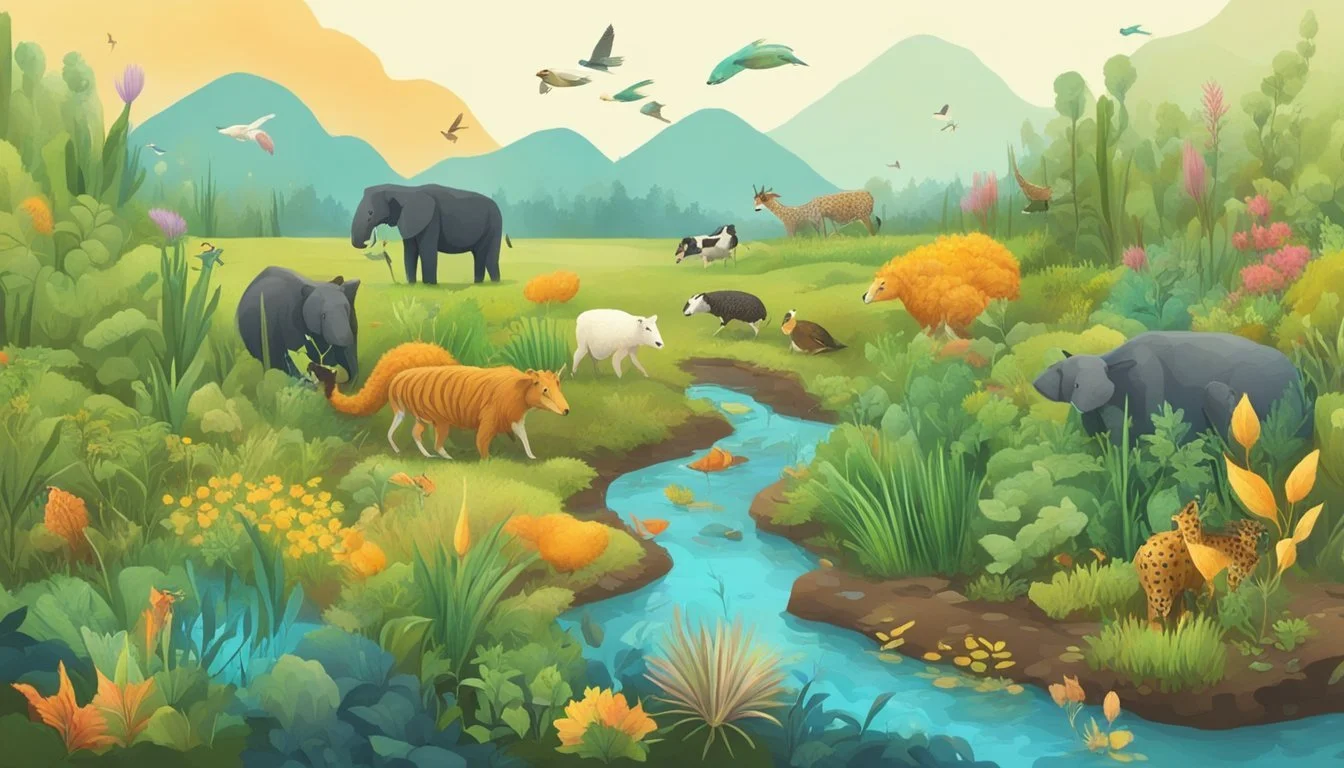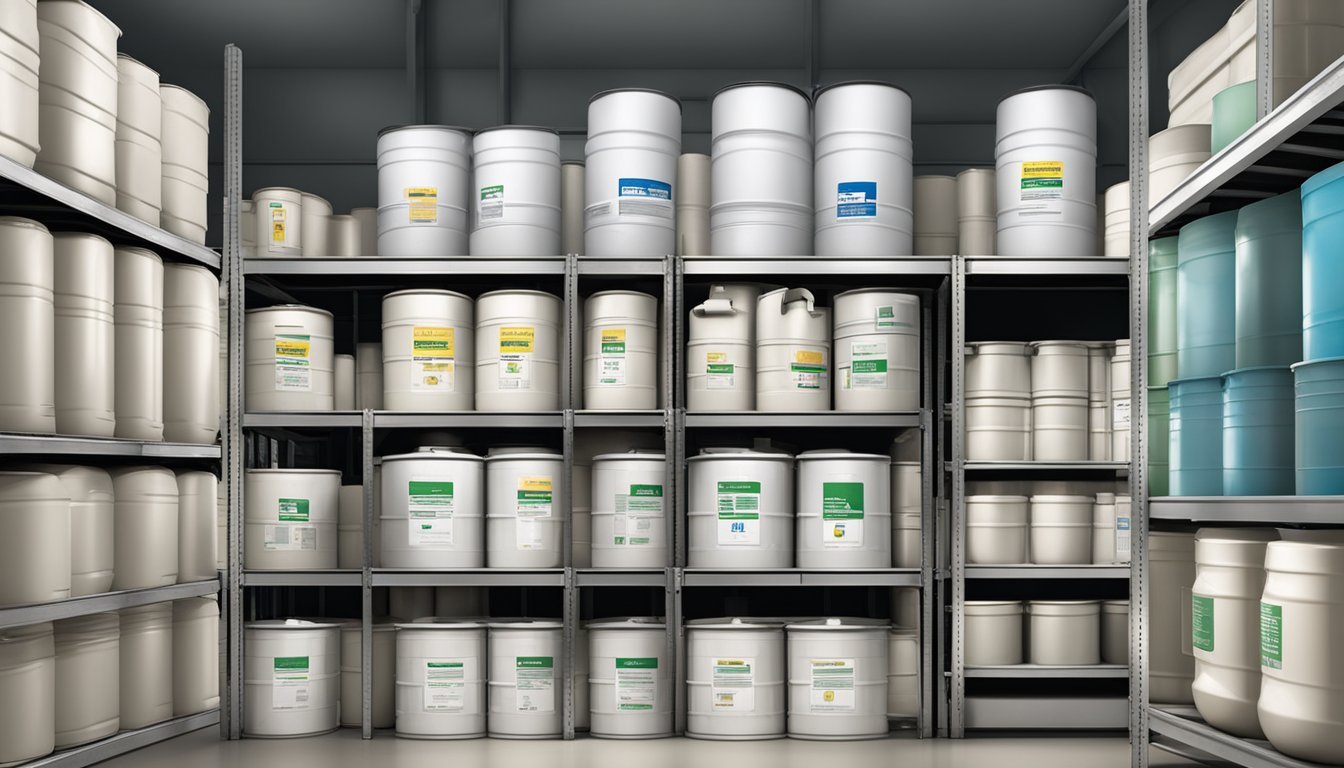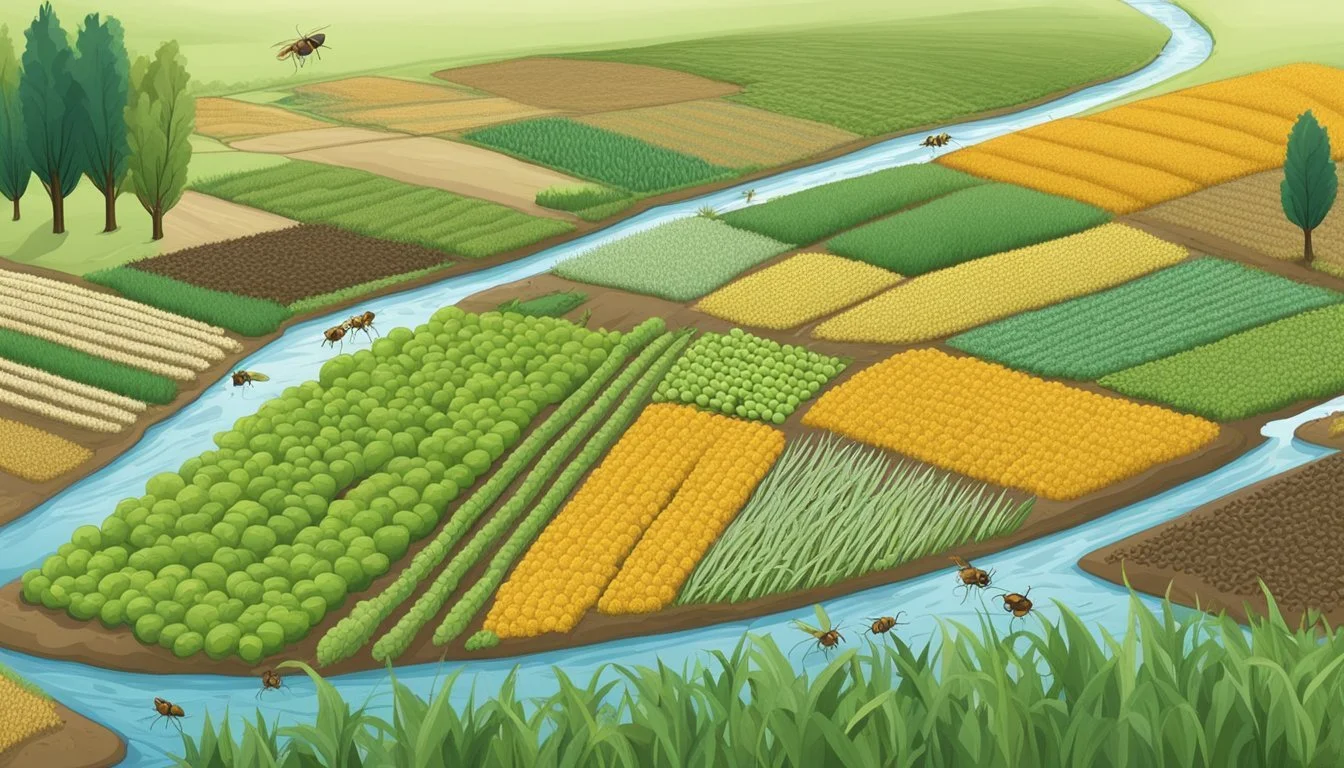Pesticide Environmental Impact
Understanding the Ecological Consequences
Pesticides play a critical role in agriculture by protecting crops from pests and diseases, which can significantly increase food production. However, the environmental impact of pesticides extends far beyond their intended targets. These chemical substances, designed to control unwanted organisms, often reach different components of ecosystems, affecting non-target species, including beneficial insects, plants, and wildlife. The unintentional spread of pesticides through processes like drift, run-off, and leaching can lead to contamination of soil, waterways, and even the air we breathe.
The consequences of pesticide use are diverse and far-reaching. They have been found to reduce nitrogen fixation, a critical process that supports plant growth and soil health, particularly in leguminous plants. Additionally, pesticides can disturb the symbiotic relationships among various organisms, impacting biodiversity and altering the balance of ecosystems. The risks associated with pesticides are not limited to the environment alone; they also pose potential health hazards to humans, leading to a complex debate on the trade-offs between the benefits provided by their use in agriculture and the potential for environmental and health consequences.
Assessing these risks involves a comprehensive evaluation of the ecological impacts of pesticides, examining how they interact with various elements of the ecosystem. The persistence of pesticides in the environment and their effects on a range of species, including those that are not the intended targets, highlight the importance of responsible pesticide management and the development of sustainable agricultural practices. As the global population continues to grow, so does the challenge of maintaining food security without compromising the health of our planet.
Pesticide Usage in Agriculture
Pesticide use in agriculture is multifaceted, involving strategies that both increase crop yields and manage a spectrum of pests effectively.
Role of Pesticides in Crop Yields
Pesticides play a pivotal role in maximizing crop yields in agriculture. They help protect crops from various insect pests, weeds, and diseases, ensuring that a higher percentage of planted seeds grow to maturity. Efficient pest management is crucial as insect pests and weeds can significantly reduce the amount of harvestable crops through consumption and competition.
Common Pesticides in Modern Agriculture
Insecticides and herbicides are the most common types of pesticides used in modern agriculture. Their application aims to manage pests and weeds that could otherwise damage or destroy crop plants. For instance, the use of organophosphates and neonicotinoids has become widespread due to their effectiveness against a broad range of insect pests.
Insecticides and Herbicides
Insecticides target and eliminate insects that can devastate crop yields. Examples include pyrethroids, which affect an insect's nervous system. Herbicides control unwanted plant growth, with glyphosate being one of the most utilized herbicides for its broad-spectrum action against weeds.
Fungicides and Their Specific Applications
Fungicides address fungal problems that can cause blight, rusts, and mildews, which threaten the health of crops. They are applied in a targeted manner to affected areas and plants. For example, chlorothalonil is often used in agriculture due to its effectiveness against a wide range of fungal diseases.
Integrated Pest Management Strategies
Integrated Pest Management (IPM) strategies emphasize the use of comprehensive, sustainable tactics incorporating both biological and chemical methods. IPM may involve the rotation of different pesticide classes to prevent resistance, planting pest-resistant crop varieties, and introducing natural predators to control pest populations.
Through these practices, they aim to minimize pesticide use and environmental impact while maintaining agricultural productivity.
Environmental Fate of Pesticides
The environmental fate of pesticides is determined by processes such as degradation, sorption, and drift, impacting persistence in ecosystems and potential bioaccumulation. Understanding these factors is crucial for assessing the long-term environmental impacts of pesticide use.
Degradation and Persistence
Pesticides undergo degradation through chemical, physical, and biological means. The rate at which a pesticide breaks down affects its persistence in the environment and potential to become a persistent organic pollutant. For example, atrazine and glyphosate are known to have varying degradation rates depending on soil composition and climate, affecting their longevity and environmental impact.
Sorption and Bioaccumulation
Sorption determines how pesticides adhere to soil particles or dissolve in water. Pesticides with high sorption rates may have reduced mobility but can lead to bioaccumulation as organisms absorb and retain these chemicals. Substances like organochlorine pesticides are known to be resistant to degradation and can accumulate in the food chain, posing risks to wildlife and humans.
Pesticide Drift and Spray Drift
Pesticide drift refers to the movement of pesticides from the target site to other areas through air or water. Spray drift, specifically, is the airborne movement of pesticides during application. This can result in the unintended exposure of non-target species and environments. Pesticides such as organophosphates can be particularly prone to drift, necessitating careful management practices to minimize off-target effects.
Impact on Ecosystems and Biodiversity
Pesticides, essential in modern agriculture for pest control, can unintentionally affect ecosystems and biodiversity. They often reach non-target areas through processes like drift, runoff, and leaching, leading to soil ecosystem disturbances, aquatic system contamination, and harm to various species.
Effects on Soil Ecosystem
Soil ecosystems consist of a myriad of microorganisms, invertebrates, and plants that contribute to biogeochemical cycles and soil fertility. Pesticides can alter the soil's physical and chemical properties, affecting its productivity and the organisms that inhabit it. For example, certain herbicides can diminish soil microbial diversity, integral for nutrient cycling. Complex interactions within the soil food web can be disrupted, resulting in a decline in soil health and ecosystem functions.
Impact on Aquatic Systems
Aquatic systems are often recipients of pesticide pollution due to runoff from agricultural fields. Pesticides entering water bodies can be toxic to aquatic life, altering the aquatic environment and reducing water quality. Substances such as insecticides are particularly harmful as they can be lethal to fish and other wildlife, affecting the balance within these ecosystems. Sediment-bound pesticides also impact bottom-dwelling organisms, with repercussions that cascade through the food web.
Biodiversity and Non-Target Organisms
Pesticide application does not discriminate between target pests and non-target organisms, thereby impacting biodiversity across various environments. Beneficial insects, soil fauna, birds, and plants can suffer from direct or indirect exposure to pesticides. This disturbance can lead to reduced numbers of pollinators and other beneficial species, weakening ecosystem resilience and the services they provide. Pesticides can also accumulate in the bodies of wildlife, potentially impacting predator-prey relationships and leading to long-term detriments within trophic levels.
Human Health and Safety Concerns
The intersection of pesticide use and human health hinges on understanding toxicity, assessing risks, and enforcing regulations to mitigate hazards. Each aspect plays a crucial role in safeguarding public health against the adverse effects of pesticides.
Risk Assessment and Toxicity
Risk assessment for pesticides involves rigorous scientific evaluation to gauge their potential to cause harm to humans and the environment. The toxicity of a pesticide dictates its capacity to cause adverse health effects. This consideration is not homogeneous; for example, organophosphates and carbamates are known to affect the nervous system. The evaluation process often involves determining safe levels of exposure and identifying substances with chronic health implications, including those classified as potential carcinogens or endocrine disruptors. Regulatory bodies utilize these findings to guide the permissible use of pesticides.
Exposure and Human Health Effects
Human exposure to pesticides can occur through various pathways, including ingestion, inhalation, or direct skin contact. Health impacts can range from acute symptoms, such as skin irritation or eye inflammation, to long-term effects, including increased cancer risk and disruption of the hormonal systems. Studies have found pesticide residues in human tissues, such as breast milk, raising concerns about prenatal exposure and subsequent health effects in children. The level of risk is contingent upon the toxicity of the pesticide and the degree and frequency of exposure.
Regulations and Risk Reduction
The Environmental Protection Agency (EPA) is tasked with the regulation of pesticides, ensuring that their use does not pose unreasonable risks to human health or the environment. The registration and safety assessment of pesticides are inherently legal and scientific processes that underpin the management and application of these substances. Regulations are in place to oversee manufacture, sale, and use of pesticides to facilitate risk reduction. Compliance with these regulations is critical for the protection of public health and the preservation of environmental integrity.
Sustainable Practices and Remediation
Sustainable practices in agriculture aim to mitigate the environmental impact of pesticides while remediation techniques strive to restore contaminated sites. Legislation plays a critical role in guiding these efforts, alongside effective waste management strategies to ensure environmental conservation.
Sustainable Agriculture Approaches
Sustainable agriculture focuses on minimizing the negative environmental effects of farming. Integrated Pest Management (IPM) is a cornerstone of this approach; it emphasizes the use of biological and mechanical control methods over chemical pesticides. Crop rotation and selecting disease-resistant plant varieties also contribute to reducing the dependency on harmful chemicals. A study highlighted in ScienceDirect critically reviews sustainable pesticide remediation, emphasizing modern agriculture's reliance on pesticides and the importance of sustainable methods.
Remediation Techniques and Phytoremediation
Remediation techniques for pesticide-contaminated soils include both physical and biological methods. Phytoremediation, specifically, uses plants to absorb, accumulate, or degrade pesticide residues. The benefits of phytoremediation are well documented, as it's an environmentally friendly way that leverages natural plant processes. For example, willows and poplars are often used due to their high tolerance and accumulation capacity. Research published in Current Pollution Reports underscores the risks of pesticide residues and reviews sustainable remediation methods, including phytoremediation.
Legislation and Waste Management
Legislation surrounding pesticide use, such as the Directive 2009/128/EC in the European Union, establishes a framework for achieving sustainable use of pesticides by reducing risks and impacts on human health and the environment. Waste management, on the other hand, involves proper disposal and treatment of pesticide containers and residues to prevent environmental contamination. The significance of regulatory frameworks is illustrated by research accessible through PubMed Central, which connects pesticide regulation to environmental impacts and emphasizes sustainable use guidelines.
By implementing sustainable agriculture, utilizing remediation and phytoremediation techniques, adhering to stringent legislation, and practicing efficient waste management, the adverse effects of pesticides can be significantly diminished, supporting overall environmental conservation.
Chemicals and Toxic Substances
The use of synthetic pesticides has resulted in a variety of chemicals and toxic substances entering the environment, posing risks to ecosystems and human health. Among these, organophosphates, carbamates, organochlorines, and heavy metals are noteworthy due to their widespread use and significant impact.
Organophosphates and Carbamates
Organophosphates and carbamates are classes of insecticides known for their ability to inhibit essential enzymes in pests. Organophosphates are derivatives of organophosphorus and are used extensively in agriculture due to their effectiveness against a broad range of insects. However, their high toxicity can adversely affect non-target organisms, including humans. Carbamates, another pesticide class, function similarly to organophosphates but typically have a shorter duration of action and a somewhat lower toxicity profile, yet they remain hazardous with the potential for environmental and health impacts.
Organochlorines and Their Impact
Organochlorines are a class of synthetic pesticides that include compounds such as DDT and benzene hexachloride. They are known for their persistence in the environment, leading to long-term ecological effects, including bioaccumulation in wildlife. The impact of these substances is significant due to their ability to remain in soil and water for extended periods, and their disruption to endocrine systems in both animals and humans.
Heavy Metals and Pesticides
Heavy metals, such as lead, mercury, and arsenic, may be present in certain pesticides or result from industrial contamination in tandem with pesticide use. These heavy metals can persist in the environment and accumulate in the food chain, causing various adverse effects on wildlife and human health. Chronic exposure to heavy metals through pesticide-contaminated soil, water, or food can lead to neurological and organ damage over time.
Monitoring and Conservation Practices
Effective management of pesticides encompasses various strategies that aim to protect vital resources such as water bodies and soil while monitoring the overall health of ecosystems. These practices often involve collaboration with organizations, including the Environmental Protection Agency, to ensure sustainable farming and ecological conservation.
Water Bodies and Groundwater Protection
Groundwater and rivers play a crucial role in maintaining ecological balance, yet they are vulnerable to water pollution from pesticides. The Environmental Protection Agency (EPA) enforces regulations to safeguard these water resources. Techniques such as buffer strips along streams and conservation tillage can reduce pesticide runoff into water bodies.
Buffer Zones: Implementation of vegetative strips along waterways to trap pollutants.
Integrated Pest Management: Reducing pesticide application through biological control strategies.
Soil Conservation Techniques
Soil erosion is a significant concern that can lead to the degradation of arable land and contamination of water sources. Adopting soil conservation methods is key to minimize this issue.
Cover Crops: Planting crops that provide soil cover to prevent erosion and improve soil health.
Contour Farming: Aligning farming practices with the natural topography to reduce runoff.
Ecosystem Monitoring and Health
The field of ecotoxicology provides essential insights into the effects of pesticides on ecosystems. Regular monitoring helps detect early signs of imbalance, allowing for timely interventions.
Biodiversity Surveys: Tracking the health and diversity of species within an ecosystem.
Pesticide Residue Testing: Frequent testing of soil and water for the presence of harmful chemicals.
By utilizing these practices, stakeholders can work towards a harmonious balance between agricultural productivity and environmental sustainability.
Pesticide Management and Regulation
Pesticide management and regulation are crucial to minimize ecological risks and ensure that environmental impacts like pesticide drift are thoroughly assessed. These practices are essential for sustaining both environmental health and agricultural productivity.
Pest Management Policies
Policymakers across the globe adopt pest management policies tailored to combat the misuse of pesticides and safeguard agro-ecosystems. They promote integrated pest management (IPM) strategies, which include biological controls and crop rotations to reduce chemical reliance. Among these policies, regulations that restrict the use of certain high-risk pesticides stand out for their critical role in protecting non-target species and human health.
Environmental Impact Assessments
Environmental impact assessments (EIAs) are systematic processes used to evaluate the potential ecological risks associated with the use of pesticides. They cover various aspects, from the likelihood of pesticide drift to the effects on non-target organisms. EIAs help in refining the application methods and timings to mitigate the environmental impact of pesticides.
Food and Agriculture Organization Standards
The Food and Agriculture Organization (FAO) of the United Nations provides a set of international standards for pesticide management. These standards are designed to guide countries in achieving a balance between pest control and environmental protection. The FAO advocates for safe trade practices and the proper use of pesticides, thereby setting a benchmark for responsible pesticide management globally.
Research Development and Future Directions
The exploration into new pesticide formulations and degradation methods marks an evolution in agricultural sciences. These advances aim to mitigate environmental impact while enhancing efficacy in pest control.
Novel Pesticide Formulations
Researchers are investigating novel pesticide formulations to improve the efficacy and safety of pesticides. For instance, advancements in nanotechnology have led to the development of nanopesticides that could offer more targeted delivery of the active ingredient, potentially reducing the amount needed and minimizing collateral environmental damage. Studies on these next-generation pesticides are crucial for enabling regulatory bodies, like the EPA, to better assess their safety and environmental impact. Relevant information on such innovations can be derived from Advancing EPA's Understanding of the Next Generation of Pesticides.
Biodegradation and Bioavailability Research
Biodegradation research is pivotal in determining how pesticides break down in the environment, influencing their bioavailability and subsequent ecological footprint. This research includes studying the decomposition of controversial chemicals such as DDT and aldrin, which persist in the environment. Understanding and enhancing the natural biodegradation processes can help reduce the longevity of harmful residues in both soil and water systems.
Innovations in Pest Management
In the realm of pest management, researchers are moving towards integrated pest management (IPM) strategies that incorporate both biological and technological approaches. In sustainable agriculture and forestry, innovation is key to balancing agricultural production with ecological preservation. The application of pesticides must be weighed against their potential to hinder the achievement of Sustainable Development Goals. Recent studies highlight these risk constraints and call for innovations that prioritize environmental safety without compromising on efficacy. Insights into this matter can be found in research linking pesticide risks and the Sustainable Development Goals.
Conclusion
Pesticides play a significant role in modern agriculture, improving crop yields and sustaining global food supplies. However, their widespread use raises serious environmental concerns. Studies highlight the pervasive nature of pesticides in various ecosystems, including their presence in water, soil, and air. These substances can disrupt local biodiversity, altering the balance of ecosystems.
Water and soil contamination are notable repercussions of pesticide application, with certain forms such as organophosphates and carbamates being frequently used and thereby contributing to pollution levels. Implementing strategies like Integrated Pest Management (IPM) is seen as a way to reduce reliance on chemical pesticides, potentially lessening the adverse environmental impacts.
64% of global agricultural land at risk of pesticide pollution
31% of that land at high risk
The numbers underscore the urgency for sustainable methods to address pest control, aiming to reconcile agricultural needs with environmental stewardship. They call for responsible management practices to ensure the long-term health of ecosystems supporting agriculture and the various forms of life they sustain.
Frequently Asked Questions
In addressing concerns about pesticides, it is important to consider their impact on soil, water, wildlife, and human health. The following questions delve into specifics relating to the ramifications of pesticide use in various ecological and human health contexts.
What are the negative consequences of pesticide use on soil and water quality?
Pesticides can degrade soil quality by disrupting its microbial community, which is vital for soil health, and contaminated runoff can lead to water pollution, affecting both drinking water sources and aquatic life.
How do pesticides affect non-target wildlife species in agricultural areas?
When pesticides drift or run off into adjacent ecosystems, they can harm wildlife, including beneficial insects, amphibians, and birds, that are not the intended targets of the treatment.
Can the use of pesticides lead to long-term ecological imbalances?
Pesticides can cause shifts in ecological balance, often reducing biodiversity by eliminating species that play crucial roles in maintaining ecosystem stability.
What are the implications of pesticide runoff on marine ecosystems?
Pesticides that enter waterways can eventually reach marine environments, where they can accumulate in the food chain, potentially causing harm to fish, coral reefs, and other marine life.
In what ways do pesticides influence pollinator health and biodiversity?
Pesticides can be toxic to pollinators, leading to declines in bee populations and affecting plant-pollinator interactions that are essential for maintaining the diversity of plant species.
How might pesticide exposure impact agricultural workers' health?
Workers exposed to pesticides may face health risks, including acute poisoning and the possibility of chronic health issues, such as respiratory problems and other long-term diseases.







